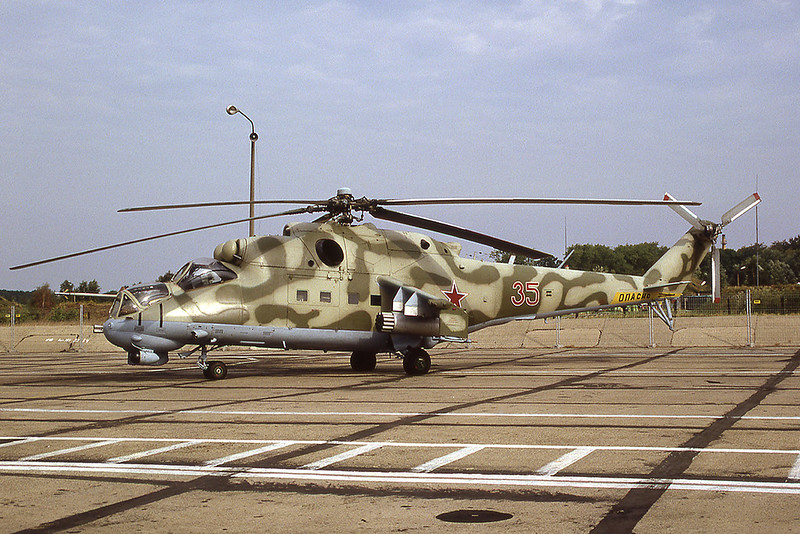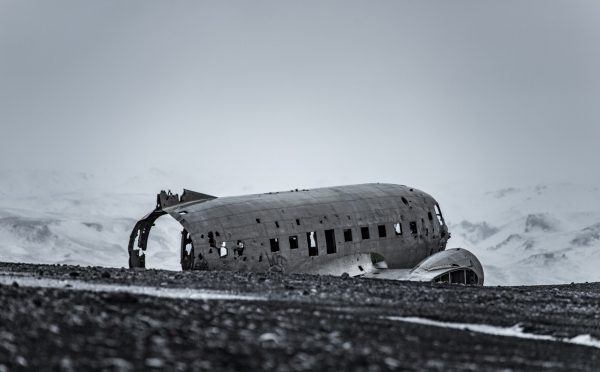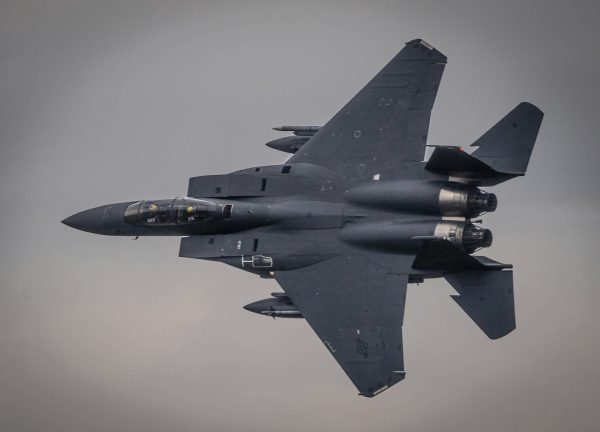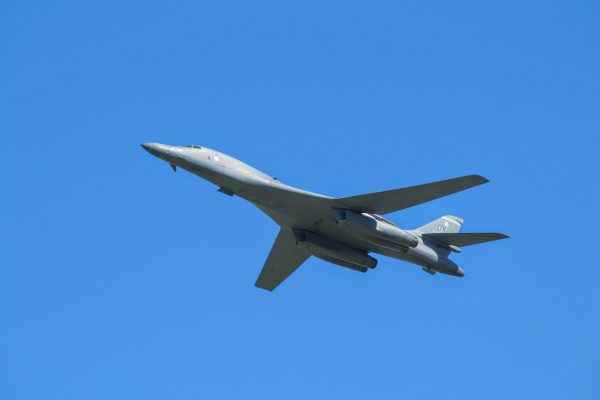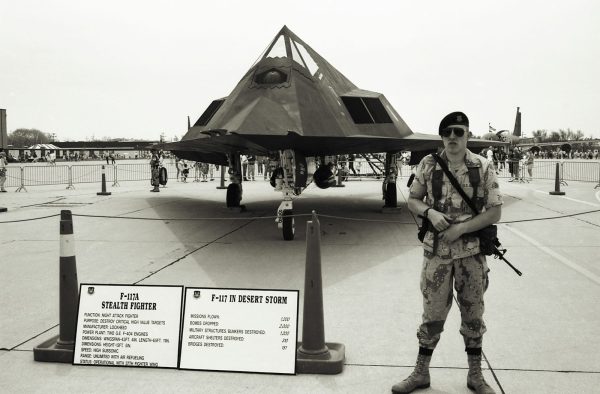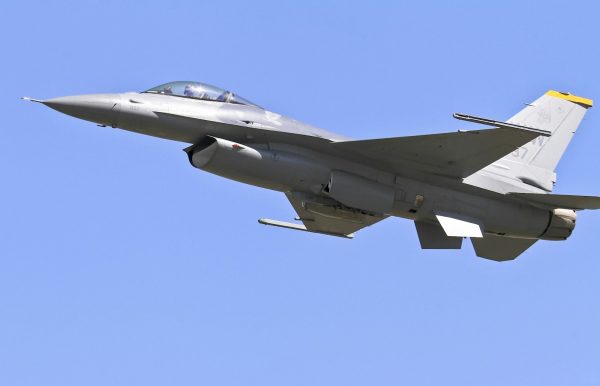MIL Mi-24, “The Crocodile”
Helicopters comes into mass production for military use when World War 2 have ended. As the 2 world superpowers, namely USA and USSR, were at a rush of improving and upgrading their armed forces in case that a World War 3 should be declared. Light, medium, and heavy tanks ranks disappeared for the Main Battle Tanks (MBT) and mobile artillery, fighter planes becomes jet fighters and interceptors, battleships disappeared for the aircraft carriers, missile cruiser, and attack submarines. And within all that, the helicopters were rising from been experimental/light utility to troop transport and ground attack platform. The USA have the Cobra attack helicopter (and later the Apache attack helicopter) and the UH-1 “Huey” troop transport. USSR on the the other hand, have the Mi-17 (NATO code-name) “Hip” for a transport, and the Mi-24 (NATO code-name) “Hind” for attacking.
History
During the 1960s, the concept of a ground-attacking helicopter become more and more useful as it was proven over, and over again in the many battles in the “Brushfire Wars”. The Red Army, of course, does not want to be obsolete to other armies. So they turned to their star designer, Mikhail Mil, and ask him to make a new attack helicopter after the Mi-4. Which Mikhail agreed to. While Mikhail and a team of other designers were working, Mikhail decided to add in some feature from himself as well. For Mikhail really likes the idea of a “flying armored infantry carrier”. And so, he and his team created the first of many different types of the Hind (by using the basic design of the Soviet military transport the Mi-17 “Hip”): the Mil Hind 24A. This design featured a single, and large and distinctive, greenhouse styled cockpit and a large cabin that can take in 8 fully armed and equipped troops. It was armed with a 50-cailber machine gun, ATGM s5k rockets, and it can carry 2 different types of bombs for a quick bombing mission. It’s armaments were simple, been also the same types of armaments with the Mi-4 but just with a extra machine gun. The Hind 24A, when it was first introduced, were a lot bigger than it’s western counterpart. But, it is pretty fast for a helicopter that size. But of course Mikhail wasn’t going to stop there, they were going to improve it. And so, they then produced many different types of the Hind. But the most famous out of all of them were probably the Hind-D and the Hind-P
Hind-D
This model is one of the distinctive type from the other Hinds. It featured a double bubble tandem cockpit, with the gunner/co-pilot sitting in the front and below the pilot. It still retain the large, 8 men carrying, cabin. It was armed with a new system of armaments. Which is a single 12.7 mm JakB minigun with four barrels. It can carry weapons such as 9M17P Skorpion (also known as the AT-2 “Swatter”) radio-guided missiles, a variety of rockets in 240, 180, 57, and 80 mm. It can also carry UPK-23-250 23 mm cannon pods and 30 mm AGS grenade launchers. In total, it can carry up to 5,291 pound of missiles, rockets, and bombs*.
Hind-P
This model is overall pretty similar to the other models of the Hinds, especially the Hind-D. It also have the distinctive double bubble tandem cockpit and the large cabin for carrying 8 troops. In a way many people often messed up the difference between the Hind-D and the Hind-P. But it is pretty easy to distinguish between the two. For the Hind-D, and the other models, all featured a minigun attached directly in front of the nose. The Hind-P, on the other hand, have it’s minigun removed. And in it’s place were a twin-barrel 30 mm cannon attached to it’s right side. it’s missile/rocket/bombs armaments were almost the same as the Hind-D.
Stats
Just like the Spitfire, the Hind family is huge. So, I’m going to use the Hind-D for the stats just for this post (the armament part is featured in the chapter “Hind-D”).
Length: 64 feet and 11 inches (19.79 meters)
Width: 21 feet and 4 inches (6.5 meters)
Height: 21 feet and 4 inches (6.5 meters)
Weight: (when fully loaded) 27,557 pounds (12,500 kilograms)
Speed: 192 mph (310 km/h)
Range: 99 miles (160 km)
Crew (required): 2 (pilot, co-pilot/gunner), although it (and in all other models) can carry up to 8 fully armed troops for special operation.
Ceiling (how high it can go): 14,765 feet (4500 meters)
Combat Record
For a helicopter that is designated as a assault gunship, the Red Army have been using it since it’s full introduction. For it have appeared in almost every single Soviet battles starting in the 1970s, most of them in the Middle East. Starting with the Soviet invasion of Afghanistan, it have appeared in the Iran-Iraq War (1980-1988), Nicaraguan civil war (also in 1980-1988), Soviet operations in Peru (1989-1995), the Gulf War (1991), Sierra Leone civil war (1991-2002), Sri Lankan civil war (1987-2009), war in Abkhazia (1992-93), Croatian war for Independence (1990), first the second war in Chechnya (1990-2000), the Cenepa War (1995), Sudanese civil war (1995-2005), the first and the second war of Congo (1996-2003), and Kosovo war (1998-1999). The Hind (and it’s relatives) were still used even after the Soviet Union have dissolved, which is in 1991. In wars like Ivorian civil war (2002-2004), Iraq War (2003-2011), War in Chad (2008), the Kachin conflict (2012-2013), Donbass War (2014), and the Syrian civil war (2011-present).
Surviving models
The Hind family (like I mentioned in the chapter above) were still in service in many different areas, from a official armed forces to small insurgents groups. The Hind were also still in service with Russia (and other former Warsaw Pact nations) after the Soviet Union falls. But, many of them have retired from service and were displayed in museums around world in places like the UK, China, Poland, Vietnam, Germany, and even USA.
Related stories
https://military.wikia.org/wiki/Mil_Mi-24
https://armedassault.fandom.com/wiki/Mi-24
https://www.flamesofwar.com/hobby.aspx?art_id=4961
*this is the link for a general weapon layout of the Hind
https://en.wikipedia.org/wiki/Mil_Mi-24#Specifications_(Mi-24)
